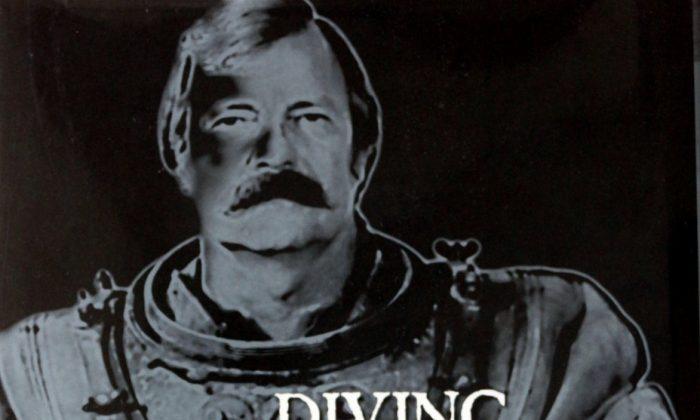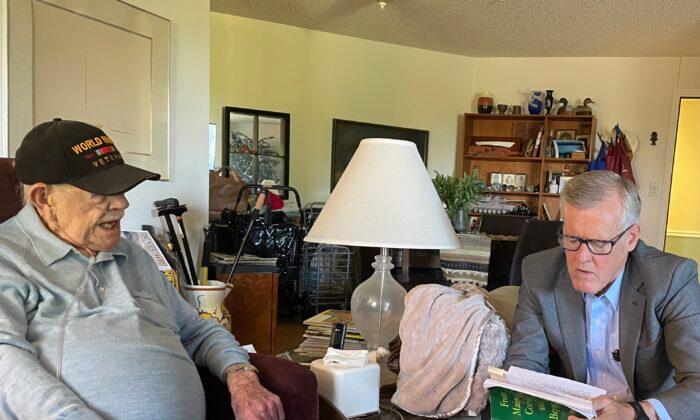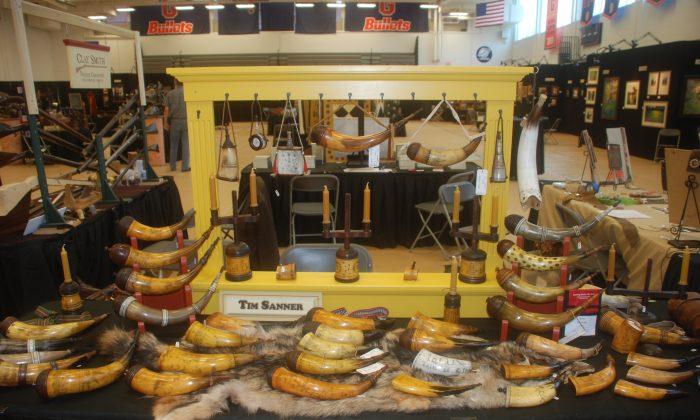There are two trite French expressions dredged up as wisdom from the ages. Famed underwater pioneers spoke them to me almost at the same time during the 1985 World Underwater Congress I organized in Miami, Florida: ‘Il faut prendre rien au serieux,’ take nothing seriously, and its companion given a few hours later, ‘Jouer le jeux,’ play the game. The paradox was how could I be my frivolous, carefree self and play the game with ultimate icons in the diving world that looked to me for leadership. Somehow it all worked when I wore the tuxedo yet left my shoes in the hotel room.
Bret Gilliam must have been given the same advice. He has achieved great success in business pursuits related to diving and underwater exploration, become a leader and achiever in diving businesses and has always kept his sense of humor. Bret, as former Board of Directors member then Chairman of the Board of NAUI (the National Association of Underwater Instructors), and many other major corporate boards, invariably had to put up with endless boring meetings. He had to listen to uninteresting people that brought their life’s foibles to bear on what really should be fun. A sign on every boardroom door must read: ‘Leave your own troubles and personality problems outside.’
Perhaps with that in mind Bret Gilliam has succeeded in business and maintained his sense of proportion. Money making is admirable but diving is fun. It really took me at least a week to turn obnoxious French vacationers into human beings so that their second week diving with me was enjoyable for me and them. Somehow diving every day, with only the need for bathing suit and a salty sea, worked the magic. Ministers forgot their pompous arrogance, couples ceased to bicker, doctors set aside their stress and the wealthy gave up the need to talk on the phone with stock brokers. A few more million Francs could hardly compensate for two weeks under the Mediterranean Sea.
Bret Gilliam’s book ‘Diving Pioneers and Innovators,’ selected twenty people that he knew, knew of, or were in some way important characters in the new wave of dive pioneers in the U.S. The book’s author gave his subjects unlimited space to tout themselves and delve into their lives and experiences in living.
Bret Gilliam is himself the last chapter, proving indeed that the ‘Last shall be first.’ The book does not go back into the history of French Navy innovators that created what was then knows as ‘Plongee Sans Cables.’ That is the title of Philippe Tailliez‘ book, ’Diving Without Cables.' It describes freedom self-contained breathing apparatus (SCUBA) offered after its invention in the early 1930s by French Navy Commander Yves LePrieur. Before these innovations hard hat divers would stomp along the bottom in lead boots.
The book’s ‘celebrated twenty’ tell their stories. Some are perhaps a little more than a reader needs to know as is the sad tale of a diver’s husband that took a .357 to his head. Indeed Bret’s own attempted rescue of a diver attacked, pulled away and killed by oceanic white tip sharks provides another sad moment in what is otherwise a collection of wonderful, happy anecdotes from people that have spent their lives in the undersea.
To say that Bret Gilliam is an original character is only to place him on a par with the twenty other extraordinary characters chosen to give forth their life stories in the 489 pages of text. The participants in this opus have shared their lives and photographs. Some are in black and white, most in color. The large format 9“ x 11” book is compiled by Bret Gilliam with the collaboration of 6 other authors. The book project required ten years to complete.
It is no wonder, since the personalities chosen live their lives in far-flung reaches of the water world and are rarely still long enough to sit down for the hours it takes to conduct in-depth interviews required for the book. The conversations, based in large measure on question-and-answer format, are valid today as they would have been decades earlier and decades hence. These are interesting people that have done interesting things. How they’ve accomplished their achievements, why, where and who they met along the way makes the book appealing, even to non-divers that have an interest in ocean activities.
Of himself, Bret Gilliam, relates that he began diving at age 8. His father was in the U.S. Navy and they lived on a boat. They would up-anchor and motor to his father’s new assignment up and down the eastern seaboard. A wonderful way for a kid to grow up. The ocean was his life, then as now, and the young boy would catch fish and sell them. His take was the incredible sum of $100 a week. Big money for a kid in those days, the 1950s.
Bret sets out his purpose when filmmaker and diving’s Poet Laureate, Stan (what a name) Waterman quotes him in the foreword: “In speaking of this project Bret said, ‘I want this book to be a way of preserving an oral history of diving, directly from the mouths of those responsible for shaping the sport from so many different segments.’”
The purpose is admirably served. The text and pictures reveal intimate details of the careers of hard hat diver Bev Morgan, author Peter Benchley, explorer Bob Ballard, filmmakers Al Giddings, Greg MacGillivray, Howard and Michele Hall, Bob Hollis, Wes Skiles, Mike deGruy, Ron and Valerie Taylor, Stan Waterman, Chuck Nicklin and others like Zale Parry, Dick Bonin Paul Humann, John Chatterton and Ernie Brooks. Some of these have crossed the bar and their words remain testimony to their courage and achievements.
Bret Gilliam’s writing style is funny and engaging. He is the Pantagruel of diving. Of his own misfortunes and survival he writes, “I survived a shark attack, four cases of bends, two aircraft crashes, a hotel bombing, a shopping list of interesting tropical bites, stings and abrasions…as well as some strange mushrooms Jimmy Buffett gave me in Tortola in 1975.”
Bret became a NAUI instructor in 1972. He operated a dive shop in the Virgin Islands and as a ship’s master directed the world’s largest dive oriented cruise ship, the 20,000 ton, 500-foot ‘Ocean Spirit.’ His impromptu toga party aboard required the liner to re-equip its bed sheet inventory at a cost of more than $3,000 before the next cruise. Bret suggests it was a small price to pay for a great party.
Divers had fun diving with Bret and Bret had fun diving and participating in the making of films that had diving in them. Perhaps that is how he chose his celebrities for the book. People that had fun and made others happy by sharing their experiences on and under the oceans of the world.
‘Diving Pioneers and Innovators’ is a book to be enjoyed first by flipping through the photographs reminiscent of a wonderful scrap book and family album then as an in-depth look at some of the people that brought the undersea into living rooms around the world. The book’s ISBN number is 978-1-878348-42-5 and is available directly from the author [email protected] or from New World Publications www.fishid.com telephone 904 737 6558.






Friends Read Free